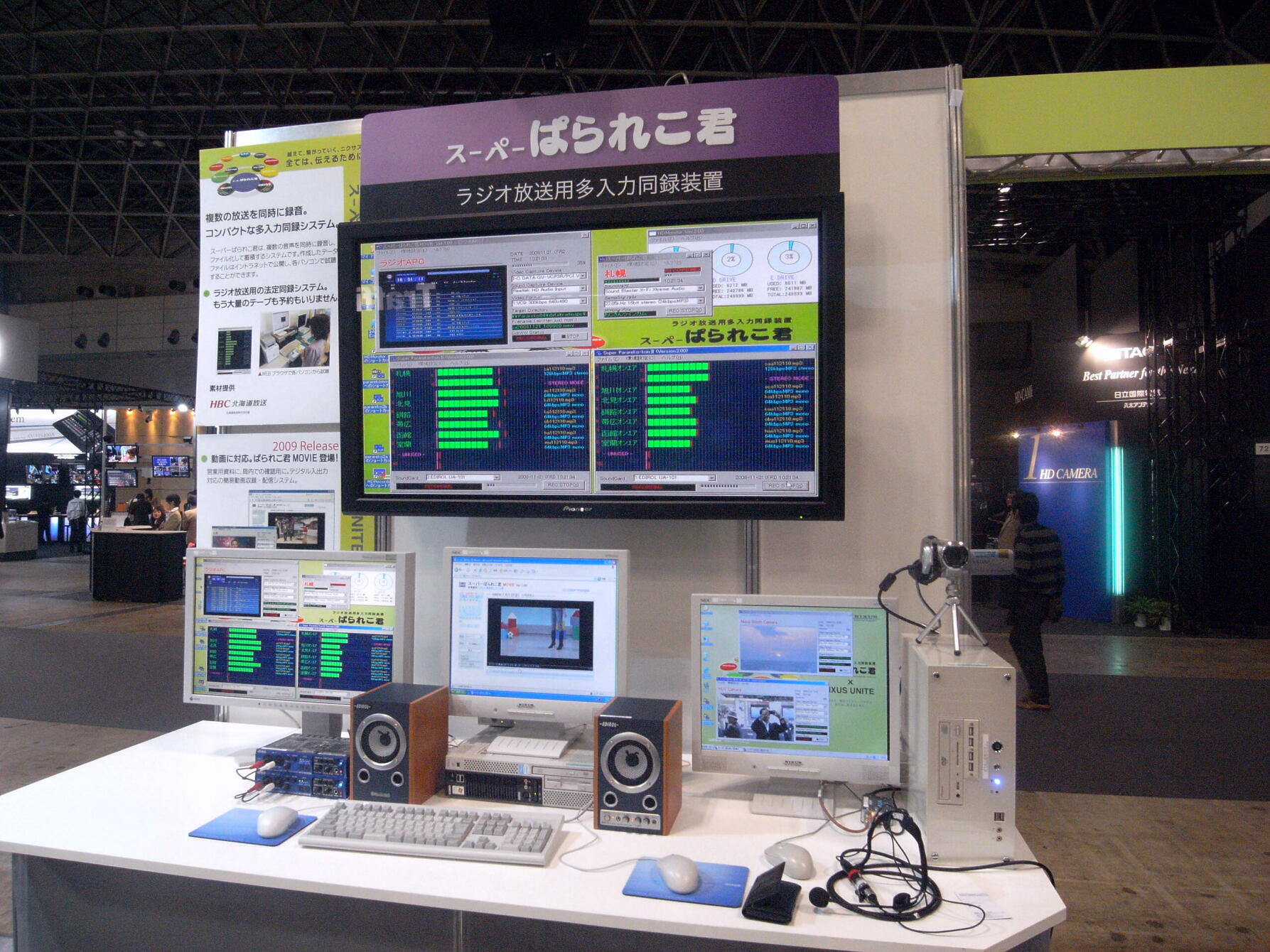The Super Parareco Kun multiple-input recorder discovered at the NIXUS booth
2008.11.21 UP

As someone who frequents radio stations a lot and visits Inter BEE every year to discover the latest technologies and innovations, I am able to meet many people in the industry and we often get to enjoy a few lively old stories. Around this time, radio and television engineers from all over the country converge on Tokyo for the National Association of Commercial Broadcasters in Japan, and it seems that more than a few of them combine this trip with a visit to Inter BEE. This year being no exception, I was able to walk the Inter BEE exhibition floor with an old acquaintance from an FM radio station.
His main purpose for visiting the show was to look at mixers and coding technologies, and we decided to check out a simultaneous recording system for radio broadcasts.
As you may know, radio stations are required by law to record and store data from their last three months of broadcasts. In the old days, this meant that piles of tape had to be stored but of course, everything is recorded and stored on hard disk today.
At the NIXUS Hokkaido Nikko Telecommunications Co., Ltd. booth, we discovered a new super-parallel recorder called Super Parareco Kun, which is a multi-input radio broadcast recorder capable of recording up to 16 channels simultaneously.
This system converts broadcast data to MP3 on the fly for low load onto a hard disk and it even seems possible, for example, to store up to three months of MP3 stereo broadcast data onto a single 120 GB hard disk (MP3 at 128Kbs).
However, this technology raised a question in my mind, so why is it now necessary to have 16 channels for the legally required recording? And the answer was that in Hokkaido, where a radio station services a wide area and broadcast content differs for each district with varying radio commercials, etc., a multi-channel system is required to record each separate broadcast.
Content recorded by this system is cast across an intranet and can be searched via a web browser for sample listening, making things really convenient for managers, producers and editors as they can quickly access material from their desktop computers.
Similar types of simultaneous recorders are already in operation at a number of radio broadcast stations but this new model is special as it offers a simple video recording function. For a radio station, recording an APC screen ensures easy checking of the screen while listening to a recording and this makes it simpler to keep track of material codes, etc.
Needless to say, both my old acquaintance in the radio-related business and I were very interested in this multi-channel radio broadcast recorder system intriguingly named, Super Parareco Kun.
[Inter BEE News Center]
Photo: The NIXUS Super Parareco Kun exhibit.







